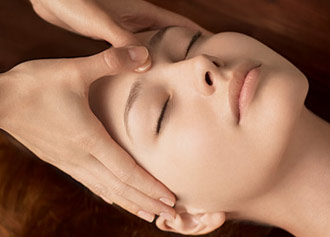
Acupressure is an Asian bodywork therapy for energy balancing, using finger pressure, on specific points (acupoints), along meridians (energy channels), that lie within the body. Acupressure is based on the same ancient Chinese Medicine theory as Acupuncture, which uses needles inserted into the meridians.
Acupuncture (needle therapy) and Acupressure (finger pressure therapy) together are referred to as, Acu-theory. Acu-theory originated in China thousands of years ago, and spread to Korea, Japan, Vietnam, France, Italy, Great Britain, the U.S. and Canada.
With either of these methods, Qi (Chi) within the body’s meridians is accessed and balanced to promote pain relief and healing of various physical, mental, and emotional issues.
Heavily based on the spiritual science of Taoism and Chinese Medicine theory, Acu-theory contains several important tenants that are laid out in the Chinese Medicine classic, the Yellow Emperor’s Classic of Internal Medicine.
Acu-Theory’s Major Tenets:
• Tao – the “Way of Nature.”
• Qi (pronounced Chi) – Life-force energy.
• Yin and Yang Polarities – two complementary and opposing properties of Qi that are reflected in the body’s meridians, systems, and organs. as well as all of Nature.
• Meridians & their 361 Acupoints – channels that carry energy up and down the body.
• 24 Hour Meridian Cycle – Qi flows in the meridians up and down the body in a 24 hour cycle.
• Special Acu-points – are entry, exit, source, luo, tonification, sedation, accumulation, master, coupled, and 5 Elements acupoints.
• Five Element School – an Acu-theory school based on the 5 Elements of Wood, Fire, Earth, Metal, and Water. Each Element contains a paired yin and a yang meridian located on the same body limb. Each Element is assigned various correspondences, e.g., a season, an emotion, and a weather climate.
• Six Divisions School – an Acu-theory school based on pairs of an arm and a leg meridian, with both meridians possessing the same polarity.
• Extraordinary Vessels (Strange Flows) – the body’s innate meridian energy self-balancing system, consisting of eight additional channels within the body. Six of these channels have no points of their own. They hop from meridian to meridian to pick up Qi from excessive meridians and drop it into deficient meridians. Two of these channels are located on the center front and back of the body, and contain their own points.
• Pulse Assessment – assessing meridian health by contacting and analyzing each meridian’s specific pulse point located on a wrist above the thumb.
• Alarm Point ( Mu & Shu) Assessment – Acu-points designated to a meridian on the front and the back of he body, when reactive indicate issues within that meridian.
• Local and Distal Point Method – using an additional acupoint located a distance from the acu-point of discomfort to help release it.
• Cun (pronounced chun) Measurement – a body measurement for locating an acupoint by using a number of fingers or arm section counted from a anatomical landmark on the body.
Originally Acupressure was used by Chinese villagers to rid themselves and their families of troublesome maladies, while Acupuncture was reserved for professional practitioners to administer.
Although, Acupressure continues to be used today as a viable self-treatment, it’s also administered by many highly trained and certified professional practitioners.
A professional Acupressure session involves a Client who lies fully clothed, relaxing on a massage table, while their Acupressurist presses firmly for 2 minutes or more on various chosen acupoints to balance the Chi flow in their body.
Since many acupoints lie in the muscle bands in the body, after an Acupressure session, clients feel quite relaxed due to their muscular tension being released.
When the muscles are tight, Chi can’t flow in the meridians. Additionally, when the neck and back muscles are tight, the Chakras (spinning vortices of Chi) can’t spin either.
Acupressure has exploded in popularity due to its non-invasive quality, as opposed to the invasive needle therapy of Acupuncture.
Additionally, due to the effectiveness of Acupressure being on par with Acupuncture, many licensed Acupuncturists are now training in Acupressure, in order to attract clients who have aversions to needles.
Copyright: www.thechiaddict.com. All rights reserved.
Leave a Reply